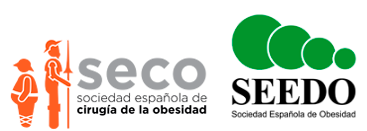Modelos experimentales para estudiar el tejido adiposo en obesidad infantil
Artículos de Revisión
Begoña Nieto, Laura Herrero, Marijana Todorčević
Organismos colaboradores:
This study was supported by the Spanish Ministry of Science and Innovation (MCIN/AEI) (PID2020-114953RB-C21 to LH, co-funded by the European Regional Development Fund [ERDF]), the Biomedical Research Centre in Pathophysiology of Obesity and Nutrition (CIBEROBN) from the Instituto de Salud Carlos III (Grant CB06/03/0001 to LH), the Merck Health Foundation (to LH), the Government of Catalonia (2021SGR00367 to LH).
Vol. 13, Núm. 2 (2023): Octubre 2023
Resumen:
La obesidad es un grave problema de salud que tiene repercusiones significativas en el bienestar de las personas y los sistemas de salud públicos. Se asocia con una reducción en la esperanza de vida y es un factor de riesgo para diversas enfermedades metabólicas como la diabetes de tipo 2, enfermedades coronarias y ciertos tipos de cáncer. Si bien la atención se ha centrado principalmente en la obesidad en la edad adulta, la obesidad infantil sigue siendo poco conocida. La obesidad infantil está aumentando de manera alarmante y se correlaciona con enfermedades metabólicas de gravedad. Por lo tanto, se necesitan modelos celulares y animales que ayuden a dilucidar las causas moleculares y genéticas subyacentes a la obesidad infantil. En el presente artículo revisamos el tema de la obesidad infantil, centrándose en los diferentes tipos de tejido adiposo, diferencias entre el tejido adiposo en adultos y niños, modelos experimentales disponibles actualmente para estudiar el tejido adiposo en niños y los factores involucrados en la patogénesis de la obesidad infantil.
Palabras Clave:
obesidad, tejido adiposo, niños, modelos experimentales
- Obesity and overweight. Accessed February 21, 2023. https://www.who.int/news-room/fact-sheets/detail/obesity-and-overweight
- Kershaw EE, Flier JS. Adipose Tissue as an Endocrine Organ. Published online 2004. doi:10.1210/jc.2004-0395
- Von Bank H, Kirsh C, Simcox J. Aging Adipose: Depot Location Dictates Age-Associated Expansion and Dysfunction. doi:10.1016/j.arr.2021.101259
- Cannon B, Nedergaard J. Brown adipose tissue: function and physiological significance. Physiol Rev. 2004;84(1):277-359. doi:10.1152/PHYSREV.00015.2003
- Cheng L, Wang J, Dai H, et al. Brown and beige adipose tissue: a novel therapeutic strategy for obesity and type 2 diabetes mellitus. Adipocyte. 2021;10(1):48-65. doi:10.1080/21623945.2020.1870060
- Giordano A, Smorlesi A, Frontini A, Barbatelli G, Cint S. MECHANISMS IN ENDOCRINOLOGY: White, brown and pink adipocytes: the extraordinary plasticity of the adipose organ. Eur J Endocrinol. 2014;170(5):R159-R171. doi:10.1530/EJE-13-0945
- Reilly JJ. Obesity in childhood and adolescence: evidence based clinical and public health perspectives. Postgrad Med J. 2006;82:429-437. doi:10.1136/pgmj.2005.043836
- Takahashi H, Menendez A, Wanczyk H, et al. Obesity and Adipose Tissue Dysfunction: From Pediatrics to Adults. Published online 2022. doi:10.3390/genes13101866
- Choe SS, Huh JY, Hwang IJ, Kim JI, Kim JB. Adipose Tissue Remodeling: Its Role in Energy Metabolism and Metabolic Disorders. Front Endocrinol (Lausanne). 2016;7(APR). doi:10.3389/FENDO.2016.00030
- Knittle JL, Timmers K, Ginsberg-Fellner F, Brown RE, Katz DP. The Growth of Adipose Tissue in Children and Adolescents CROSS-SECTIONAL AND LONGITUDINAL STUDIES OF ADIPOSE CELL NUMBER AND SIZE.
- Poissonnet CM, LaVelle M, Burdi AR. Growth and development of adipose tissue. J Pediatr. 1988;113(1 PART 1):1-9. doi:10.1016/S0022-3476(88)80520-1
- Frigolet ME, Gutiérrez-Aguilar R. The colors of adipose tissue. Gac Med Mex. 2020;156(2):142-149. doi:10.24875/GMM.M20000356
- Reyes-Farias M, Fos-Domenech J, Serra D, Herrero L, Sánchez-Infantes D. White adipose tissue dysfunction in obesity and aging. Biochem Pharmacol. 2021;192. doi:10.1016/J.BCP.2021.114723
- Lee MJ, Fried SK. Optimal Protocol for the Differentiation and Metabolic Analysis of Human Adipose Stromal Cells. Published online 2014. doi:10.1016/B978-0-12-800280-3.00004-9
- Ruiz-Ojeda FJ, Rupérez AI, Gomez-Llorente C, Gil A, Aguilera CM. Molecular Sciences Cell Models and Their Application for Studying Adipogenic Differentiation in Relation to Obesity: A Review. doi:10.3390/ijms17071040
- Darimont C, Zbinden I, Avanti O, et al. Reconstitution of telomerase activity combined with HPV-E7 expression allow human preadipocytes to preserve their differentiation capacity after immortalization. Cell Death Differ. 2003;10:1025-1031. doi:10.1038/sj.cdd.4401273
- Todor Cevi C M, Hilton C, Mcneil C, et al. A cellular model for the investigation of depot specific human adipocyte biology. Published online 2017. doi:10.1080/21623945.2016.1277052
- Fischer-Posovszky P, Newell FS, Wabitsch M, Tornqvist HE. Human SGBS Cells – a Unique Tool for Studies of Human Fat Cell Biology. Obes Facts. 2008;1(4):184-189. doi:10.1159/000145784
- Yeo CR, Agrawal M, Hoon S, et al. SGBS cells as a model of human adipocyte browning: A comprehensive comparative study with primary human white subcutaneous adipocytes OPEN. doi:10.1038/s41598-017-04369-2
- Dey SK, Senapati S. In Vivo Models for Obesity and Obesity Related Carcinogenesis. Obesity and Cancer. Published online 2021:279-300. doi:10.1007/978-981-16-1846-8_14
- Pouteau E, Turner S, Aprikian O, et al. Time course and dynamics of adipose tissue development in obese and lean Zucker rat pups. Int J Obes (Lond). 2008;32(4):648-657. doi:10.1038/SJ.IJO.0803787
- Gulyaeva O, Dempersmier J, Sul HS. Genetic and Epigenetic Control of Adipose Development. doi:10.1016/j.bbalip
- López-Taboada I, González-Pardo H, Conejo NM. Western Diet: Implications for Brain Function and Behavior. Front Psychol. 2020;11. doi:10.3389/FPSYG.2020.564413/FULL
- Miller AL, Lumeng JC. Pathways of Association from Stress to Obesity in Early Childhood. Obesity. 2018;26:1117-1124. doi:10.1002/oby.22155
- Rushing A, Sommer EC, Zhao S, Po’e EK, Barkin SL. Salivary epigenetic biomarkers as predictors of emerging childhood obesity. doi:10.1186/s12881-020-0968-7
- Rushing A, Sommer EC, Zhao S, Po’e EK, Barkin SL. Salivary epigenetic biomarkers as predictors of emerging childhood obesity. doi:10.1186/s12881-020-0968-7
- Lin J, Gu W, Huang H. Effects of Paternal Obesity on Fetal Development and Pregnancy Complications: A Prospective Clinical Cohort Study. Front Endocrinol (Lausanne). 2022;13. doi:10.3389/FENDO.2022.826665/FULL
- Entringer S, Buss C, Swanson JM, et al. Fetal Programming of Body Composition, Obesity, and Metabolic Function: The Role of Intrauterine Stress and Stress Biology. J Nutr Metab. 2012;2012:16. doi:10.1155/2012/632548
- Shawe J, Delbaere I, Ekstrand M, et al. Preconception care policy, guidelines, recommendations and services across six European countries: Belgium (Flanders), Denmark, Italy, the Netherlands, Sweden and the United Kingdom. Eur J Contracept Reprod Health Care. 2015;20(2):77-87. doi:10.3109/13625187.2014.990088
Texto Completo:
PDF 
2250-737X
Directory Open Journal Acces
Journaltocs.ac.uk
Latindex
Dulcinea
ISSN.org

Atribución-NoComercial 4.0 Internacional (CC BY-NC 4.0)
https://creativecommons.org/ licenses/by-nc/4.0/deed.es


